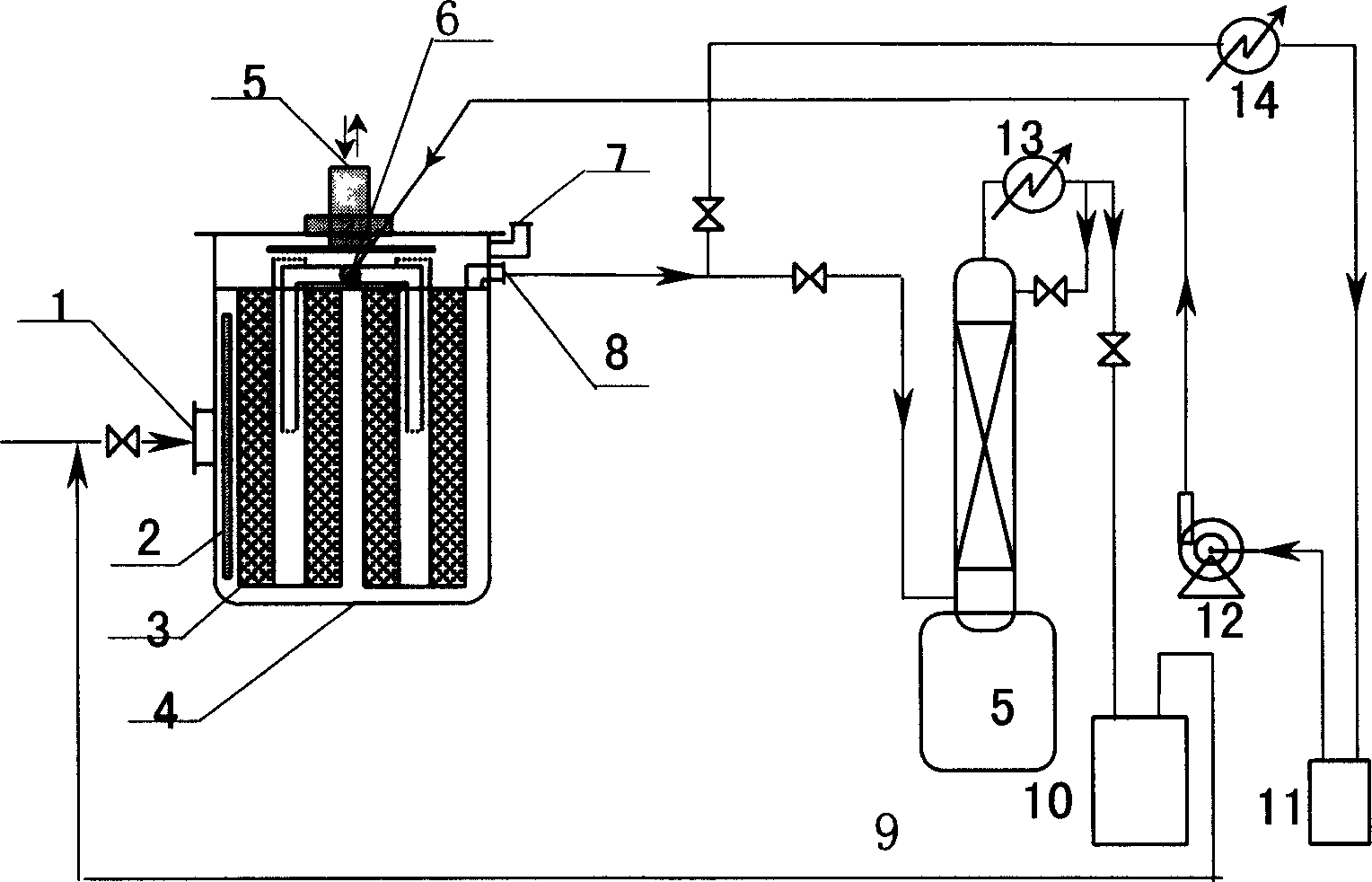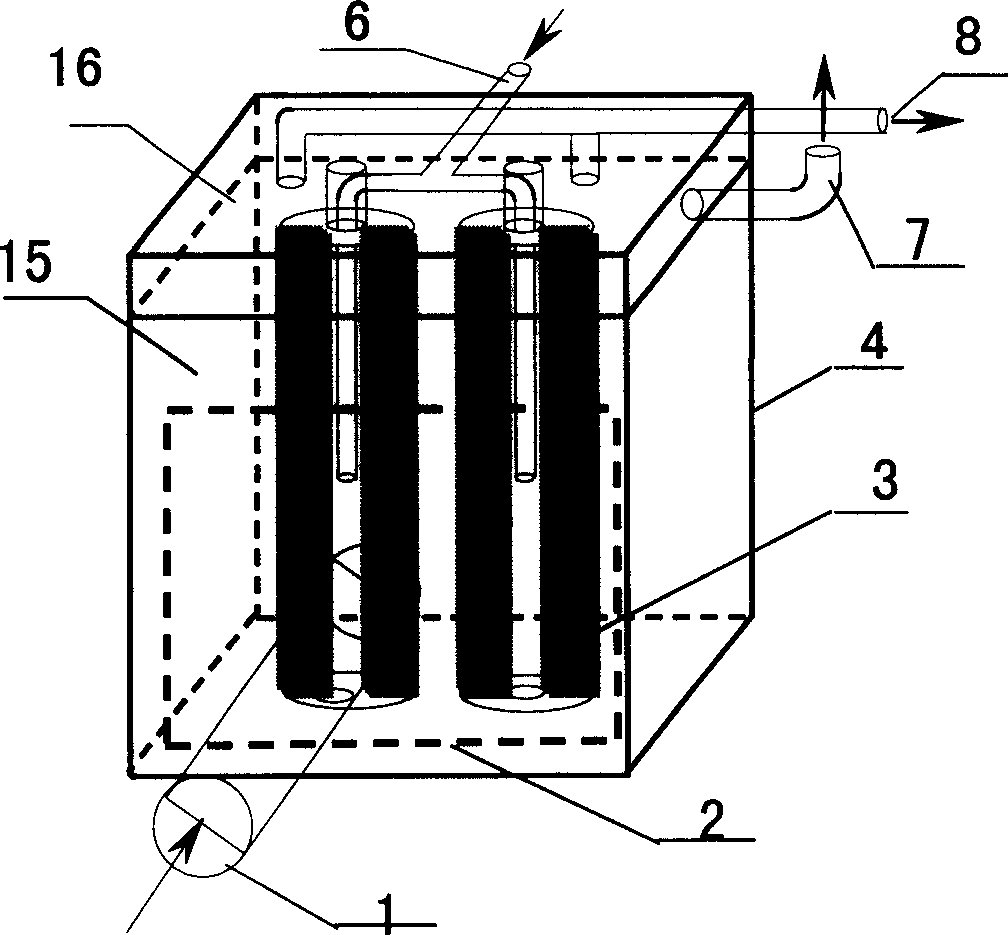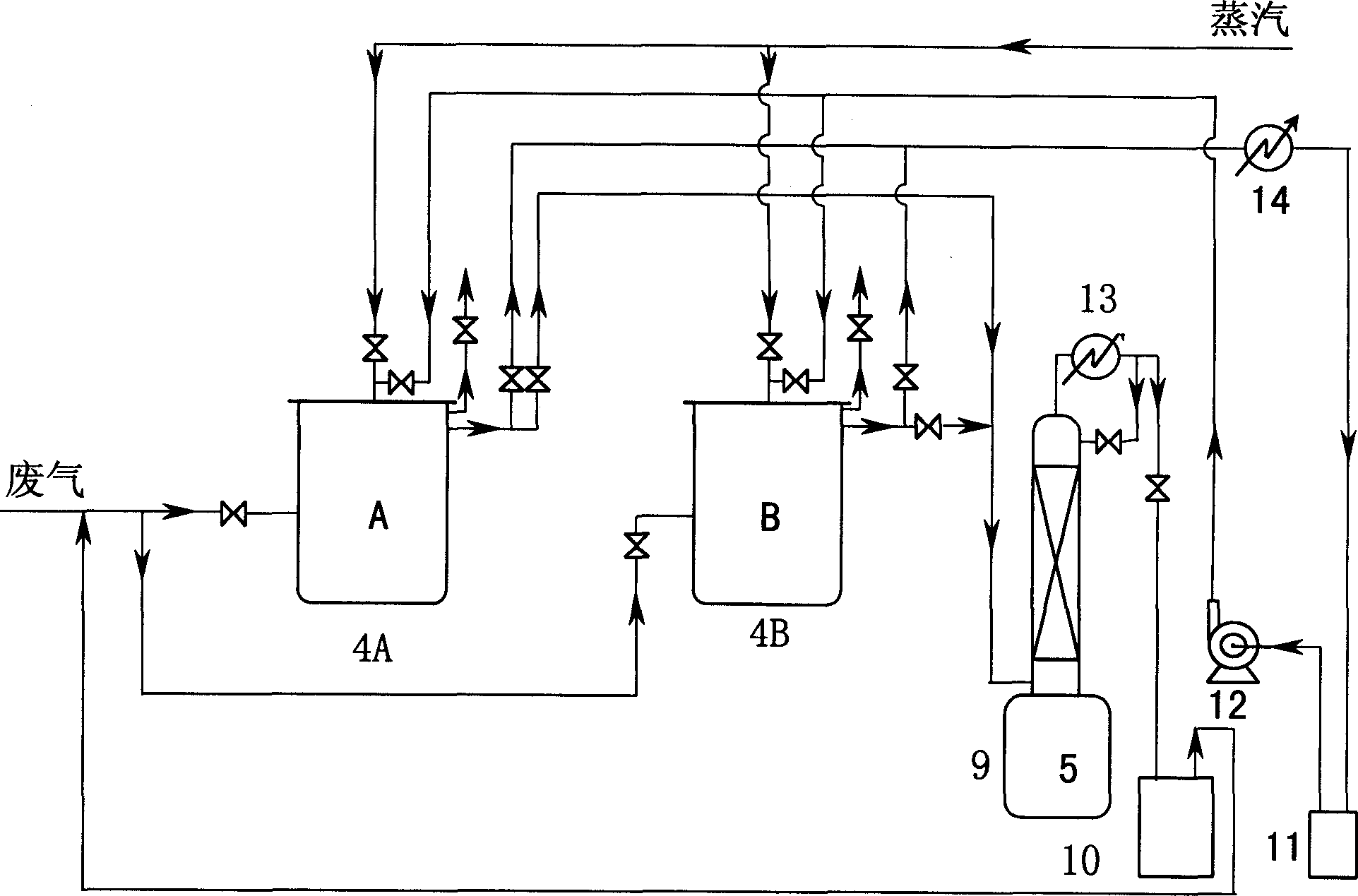Active carbon fiber device and method for adsorbing, recovering and treating organic waste gas
A technology of activated carbon fiber and organic waste gas, which is applied in chemical instruments and methods, separation methods, dispersed particle separation, etc., can solve the problems of increased waste gas treatment costs, inability to waste steam, and occupying adsorption capacity, etc., to improve the effective utilization rate, avoid Poor adsorption effect, avoid the effect of repeated adsorption
- Summary
- Abstract
- Description
- Claims
- Application Information
AI Technical Summary
Problems solved by technology
Method used
Image
Examples
Embodiment 2
[0051] Example 2 Absorption test of n-hexane exhaust gas
[0052] Adsorber outlet
[0053] Steam consumption
[0054] 2
[0055] Steam consumption
Embodiment 5
[0056] Example 5 Analyzing the influence of the position of the steam inlet on the analytic effect of acetone. The amount of activated carbon fiber was 150g, the acetone adsorption amount was about 21g, and the analytical vapor pressure was 0.4-0.6Mpa (saturated water vapor).
[0057] Acetone recovery (unit: g)
[0058]
PUM
 Login to View More
Login to View More Abstract
Description
Claims
Application Information
 Login to View More
Login to View More - R&D
- Intellectual Property
- Life Sciences
- Materials
- Tech Scout
- Unparalleled Data Quality
- Higher Quality Content
- 60% Fewer Hallucinations
Browse by: Latest US Patents, China's latest patents, Technical Efficacy Thesaurus, Application Domain, Technology Topic, Popular Technical Reports.
© 2025 PatSnap. All rights reserved.Legal|Privacy policy|Modern Slavery Act Transparency Statement|Sitemap|About US| Contact US: help@patsnap.com



